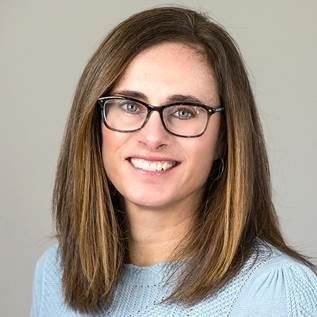
As a career storyteller and executive resume writer, my favorite part of the job is hearing aboutthe fascinating journeys of others.
In this article, I present three job seekers from three different industries, and yet all have one thing in common.
Three Job Seekers Wanting Career Change
Each of these 3 job seekers wanted to make significant changes to their careers.
After working together to create career marketing collateral that included up-to-date resumes and LinkedIn profiles, I got the opportunity to interview each of them to discuss their path to success.
They were in different phases of their careers and had very different career goals. Read how each succeeded in achieving their goal.
Advertisement
Their Starting Points
-
Sarah
Sarah wanted to leap from an east coast Fortune 500 bank where she had worked for 14 years in sales and product development to the West Coast to work in training, which had been a sliver of her past roles but a part she truly loved.
-
Laura
Laura had worked her way up the corporate ladder for a financial services firm from administrative assistant to a communications VP and spent ten years as an entrepreneur before establishing a successful executive coaching practice.
After 16 years as a business owner, she was eager to return in some capacity to Corporate America.
-
Drew
Drew’s career path included moves from California to Illinois to Wisconsin working as an airline flight attendant, a telecom account exec, and an IT support professional with a Midwest university. He wanted to leverage his newly-earned MBA to make the leap into marketing and product management in the travel industry.
Although each wound up at a different destination, many of the steps they took on the journey were remarkably similar.
Making a Job Search Plan
Sarah and Laura each forged a plan before diving into the job search waters. Drew did not, at first – causing him to regroup and redirect.
-
Sarah
For Sarah, creating a plan required a good bit of research and reading – beginning with LinkedIn.
“LinkedIn is an amazing source for learning about people and companies,” she says. “It is sort of a rabbit hole – but I recommend people go down rabbit holes!”
She attributes this approach to her ability to speak intelligently about topics that arose during interviews.
-
Laura
Laura’s journey began by getting her ducks in a row. She went to the web – going to online job portals to get a sense for what companies seemed to have hiring budgets.
From there she focused on who she knew and who she wanted to get to know. She wound up re-connecting with a group she’d lost touch with years ago, who still held regular monthly meetings.
To her surprise, she recalls lighting up listening to the guest speaker at the meeting. They wound up having coffee, and this led to introductions to others. This happened on many occasions.
-
Drew
Drew began his job search by diving into job boards. “I figured the more I applied to, the better my chances,” he recalls. “The trouble was, I didn’t hear anything back.”
The Day In/Day Out Job Hunt Routine
While Sarah and Drew were looking to move geographically, Laura wanted to stay put. As a result, while all three had similarities in their job search routines, there were some slight differences.
-
Sarah
Sarah had a super busy day job and a family to take care of when she got home each day. Making the most of limited time, she took advantage of 5 minutes here and there to do research and take notes on her mobile device.
Then, when she had more time, she’d review her notes and delve deeper, reaching out by phone, email, or LinkedIn’s InMail. “I often spent an hour each day job hunting,” Sarah recalls, “but it was often in 5-minute chunks.”
-
Laura
Looking to stay local, Laura focused on having face-to-face conversations with anyone willing to listen.
These led to other conversations which in turn led to new and sometimes unexpected opportunities.
She found herself eating breakfast with a friend that at the beginning didn’t seem to be in a position to advance her job search much. To Laura’s surprise, however, it turned out through chatting that she knew of someone who knew someone that led to the company where she now works!
-
Drew
After his online job search fail, he began to leverage LinkedIn to its fullest. “I got in the habit of sharing and commenting on things I found interesting every morning, and then repeated the process at the end of the day,” he notes. “I basically committed to being on LinkedIn daily.”
He overcame his normal reluctance and began asking people in his targeted industry for advice. “Sometimes they didn’t respond,” he recalls, “but sometimes they did!”
This led to discussions that ultimately led to an interview and a job offer. “I learned how important it is to keep communication channels going.”
Overcoming Interviewing Hurdles
-
Sarah
Sarah’s biggest hurdle was convincing career change skeptics afraid to take a risk on someone without specific experience. She tackled this by carefully reviewing job descriptions and tweaking her resume here and there to align closely with the listed qualifications and requirements.
A great part about this process, she recalls, is that it required her to really think through her career story to creatively show how her experience, albeit in a different role and industry, was well aligned to the targeted role.
In addition to creating a targeted resume, this exercise gave her plenty of examples to share during interviews!
-
Drew
Drew found that job boards offered great insight into skills that may be lacking. While some missing qualifications were insurmountable, others could be tackled through training. “I enrolled in some online classes to close my skills gap,” he says.
Parting Words of Wisdom for Other Job Seekers/Career Changers
Sarah, Laura and Drew all made successful career pivots but also walked away with some lessons learned. They were more than happy to share these learnings with other job seekers and career changers.
-
Sarah
“The grass is not always greener,” Sarah warns. While she urges career changers to be passionate about their aspirations, it is important to conduct research and remain realistic about the pros and cons.
-
Laura
Laura recommends job seekers keep an eye on how they feel after each encounter during the job search journey – and let these feelings guide whether they proceed forward or go in another direction. “It may sound a bit woo-woo,” she says, “but I found that this led to several serendipitous encounters.”
-
Drew
“I remember a conference speaker once said that if you wind up in an industry you are passionate about, it won’t feel like work,” he recalls. “I totally agree with that.”
The Bottom Line
While Sarah, Laura and Drew had different career aspirations, their career pivot success can be attributed to a similar multifaceted approach. Each created a job search plan, a framework for structuring their job search routine, and a strategy to overcome obstacles that crossed their path!
More About Successful Career Change
- 10 Smart and Simple Steps to Start Your Career Transition
- Finding Your New Career by Trying It Out
- Self-Assessment for Successful Career Change
- Research for Your Career Change
- Retreat and Renewal to Find Clarity for Your Career Transition
- Overcoming Career Change Fears
- Changing to Nonprofit From Corporate Sector
 About the author…
About the author…
Career Change Expert Virginia Franco is a 4 times Certified Executive Resume Writer, LinkedIn Writer, Coach and Career Storyteller. Her experience in corporate communications, journalism, and social work offered her a unique understanding of how people read, communicate, and share information. Connect with Virginia via her website VirginiaFrancoResumes.com, on LinkedIn, and on Twitter at @VAFrancoResumes.
More about this author…
Don't forget to share this article with friends!




